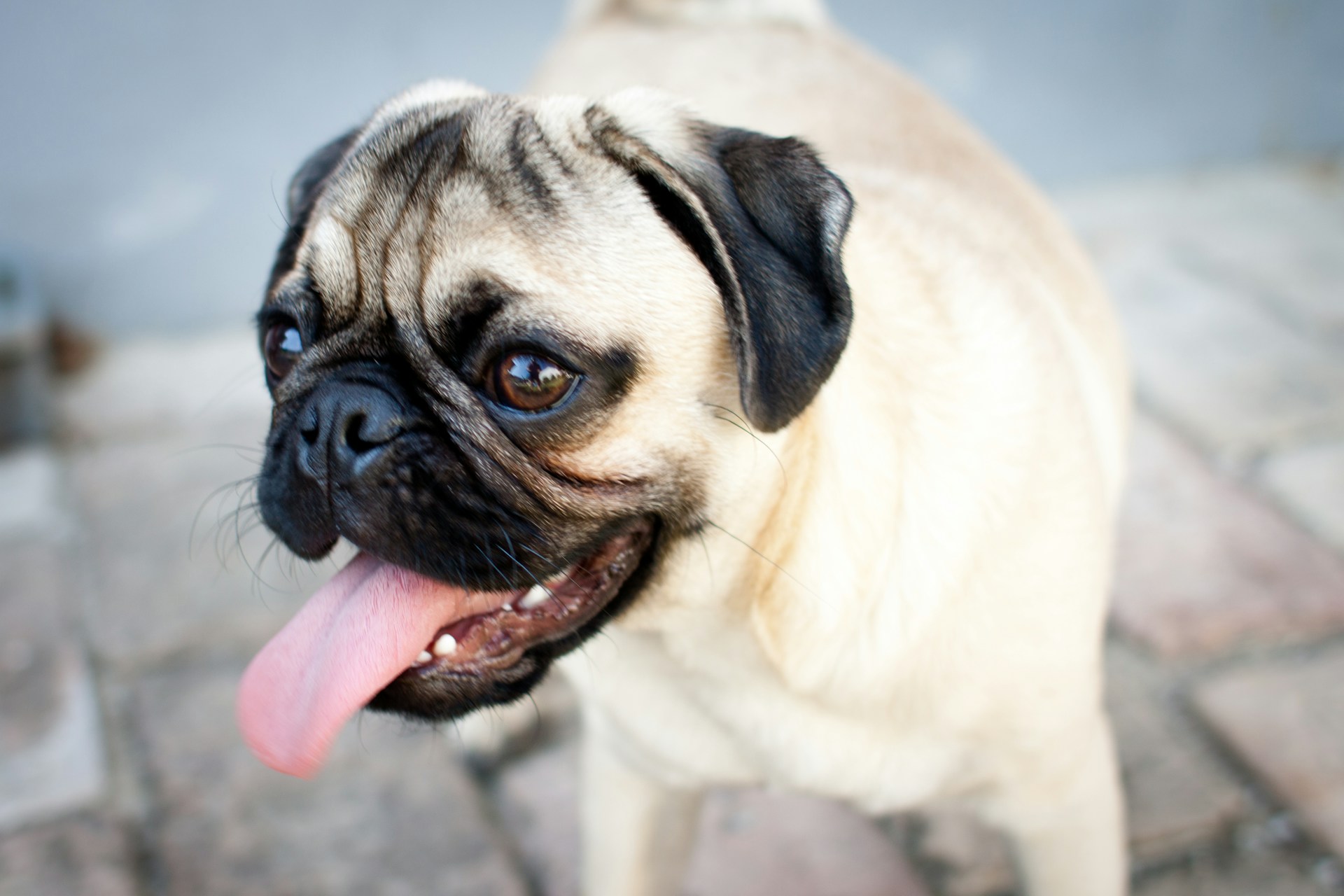
18 Apr How Oral Cysts are Diagnosed and Treated in Dogs
Oral cysts in dogs can vary in type and severity, but they’re typically diagnosed and treated through a combination of clinical examination, imaging techniques, and sometimes biopsy. The most common cause for oral cysts in dogs is impacted teeth. These can be seen in any dog but are most common in brachycephalic breeds. These are breeds with a shorter facial confirmation (short nose) than other dogs. Here’s a general overview:
How Are Oral Cysts Diagnosed in Dogs?
1. Clinical Examination
A veterinarian will conduct a thorough examination of your dog’s oral cavity. They’ll look for any abnormalities, such as swellings, discolored tissue, or ulcerations, which may indicate the presence of a cyst. They will also be able to determine if a tooth is “missing”. However, they may not truly be missing, but impacted and not erupted.
2. Imaging
X-rays (radiographs) or other imaging techniques like CT scans are mandatory to get a view of the cyst’s location, size, and any impact it may have on surrounding structures like teeth or bone. It is not possible to fully evaluate a cyst without some type of dental imaging with a patient under anesthesia. Most veterinary dental specialists now utilize cone beam CT (CBCT) technology for most of their dental cases. CBCT scans provide a significantly higher level of detail than dental radiographs since the images are in 3D, while dental radiographs are 2-dimensional shades of grey. CBCT technology has become the highest standard of imaging in veterinary dentistry and is easily the diagnostic tool of choice for evaluating a cystic lesion. I’m proud to say that my clinic, Animal Dental Care and Oral Surgery in Colorado Springs, in 2020 was the first veterinary facility in the state of Colorado to have a CBCT unit.
3. Biopsy
In some cases, a biopsy may be recommended to confirm the nature of the cyst and rule out any potential malignancy. This involves taking samples of the cystic lining while the dog is anesthetized. This is one situation where a biopsy can be performed at the same time as definitive treatment of the cyst and no further surgery may be needed.
Understanding Treatment
1. Surgical Removal
The most common treatment for oral cysts in dogs is surgical removal. Depending on the size and location of the cyst, as well as its type, the procedure may be relatively simple or more complex. Your veterinarian will determine the best approach for your dog. Most cysts are treated with an enucleation procedure where the cyst is fully exposed and the cystic lining is completely removed (enucleated). If an impacted tooth is detected within the cyst, it is most likely a dentigerous cyst. Left untreated these lesions will slowly expand and incorporate/destroy surrounding bone and teeth. They are most often diagnosed in the rostral (front) lower jaws (mandibles) of patients due to impaction of the mandibular 1st premolar. If not diagnosed and treated surgically, they may compromise the involved mandible leading to a jaw fracture. This is the perfect example of why cysts should ideally be diagnosed early in their existence. It also points to the fact that all dogs and cats should have at least annual dental cleaning procedures with a comprehensive oral examination and imaging. It is far better to diagnose and treat a dentigerous cyst in a young dog when the lesions are small than when they have significantly enlarged.
2. Medication
In some cases, particularly if the cyst is infected or causing significant discomfort, your vet may prescribe medications such as antibiotics or pain relievers to manage symptoms before or after surgery. However, infected cysts are extremely rare and do not typically require antibiotic therapy. Post-operative pain relief is far more important.
3. Follow-up Care
After surgery, your dog may require follow-up appointments to monitor healing and ensure there are no complications. Oral restrictions where they are fed soft food and not allowed access to toys will most likely be required for up to 14 days. Your veterinarian will also advise regular dental care in the form of at least annual dental cleanings, oral examinations, and dental imaging.
4. Specialized Treatment
In certain situations where the cyst is particularly large or invasive, or if it’s associated with a more serious underlying condition, your vet may refer you to a board-certified veterinary dentist and oral surgeon for specialized treatment. All veterinary dentists are trained and specialize in oral surgery and should be utilized first since most veterinary surgeons who are not boarded in dentistry do not have the necessary means to image the lesions with dental radiographs or CBCT, or extract the involved teeth.
Other Types of Oral Cysts in Dogs
While most oral cysts in dogs are secondary to impacted teeth causing dentigerous cysts, occasionally a board-certified veterinary dentist may diagnose other types of cysts, such as radicular (root) cysts. These cysts are typically caused by infection/inflammation of the tooth’s pulp that causes a cyst in the surrounding bone. Treatment involves complete removal of the involved tooth and total enucleation/debridement of the cyst.
What About Oral Cysts in Cats?
Please forgive me for not mentioning our feline patients! Fortunately for them, they rarely have impacted teeth or other causes for cystic lesions. This problem is certainly more common in dogs.
Board Certified Veterinary Dentist in Colorado Springs
It’s important to note that the specific diagnosis and treatment plan will depend on factors such as the type and location of the cyst, as well as your dog’s overall health and any underlying conditions they may have. Always follow your veterinarian’s recommendations for the best outcome.
If you have any questions regarding your dog’s oral health, please reach out to Animal Dental Care and Oral Surgery in Colorado Springs, Colorado.
Images used under creative commons license – commercial use (4/18/2024). Photo by Peter Oertel on Unsplash

